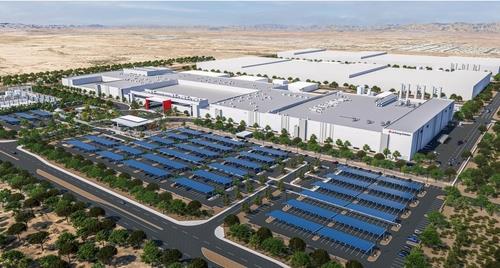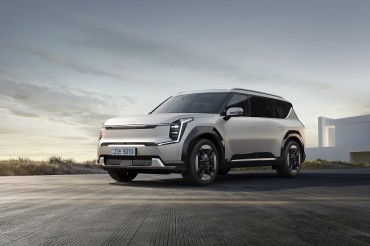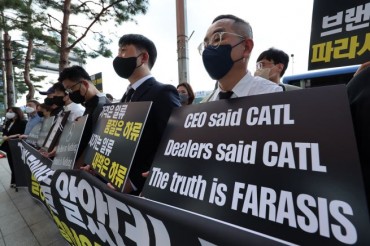
This computerized image provided by LG Energy Solution depicts the planned completion of its Arizona battery cell plant. (Yonhap)
SEOUL, June 28 (Korea Bizwire) – LG Energy Solution Ltd. (LGES), South Korea’s leading battery maker, said Friday it has suspended the construction of a battery production line for energy storage systems (ESS) in its Arizona plant.
In April, LGES began the construction of the US$5.5 billion battery plant to produce 46-Series cylindrical batteries for electric vehicles and lithium iron phosphate (LFP) pouch-type batteries for ESSs in Arizona, with an aim to start operations in 2026.
“We are adjusting the pace of planned investment execution efficiently and flexibly according to market conditions, and focusing on optimizing our operations. Temporarily suspending the construction of the Arizona ESS battery facility is part of such efforts,” LGES said in a statement.
But the construction of the cylindrical EV battery production line is ongoing as planned, it said.
The Arizona plant is the second stand-alone facility (of LGES) to be built in the United States. And it is also the first manufacturing facility to produce cylindrical batteries in the U.S.
LGES has its first stand-alone battery plant in Holland, Michigan, which was built a decade ago. Other plants in North America in operation or under construction are all part of joint ventures with major carmakers.
In Korea, LGES plans to first mass produce 46-Series batteries at its Ochang plant as early as August for delivery to its customers, which is the earliest among major global battery makers.
Cylindrical batteries are small and round, making it possible for them to be stacked in devices of all sizes. Compared with other battery formats, the cylindrical type can pack more power and is seen as relatively safe.
LGES’ investments in battery facilities in the U.S. represent its full-fledged efforts to provide Inflation Reduction Act (IRA) compliant batteries to its customers.
The IRA gives up to $7,500 in tax credits to EV buyers whose vehicles were assembled in North America and made with minerals mined and processed in the U.S. or countries or regions that have free trade agreements with Washington.
When completed, the Arizona plant’s annual output capacity is expected to reach 36 gigawatt-hours of cylindrical batteries and 17 GWh of LFP ESS batteries.
In North America, LGES currently operates three battery cell plants — the first and second plants under the JV with GM, and one in Holland, Michigan. Plants under JVs with GM, Hyundai Motor Group, Honda Motor Co. and Stellantis N.V. are being constructed in the U.S. states of Michigan, Georgia and Ohio, as well as Ontario, Canada, respectively.
In other regions, the company has plants in South Korea, Poland and China, with a plant set to start production in Indonesia in the second half of 2024.
(Yonhap)






